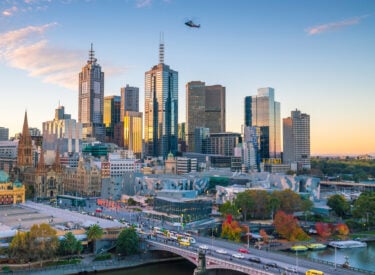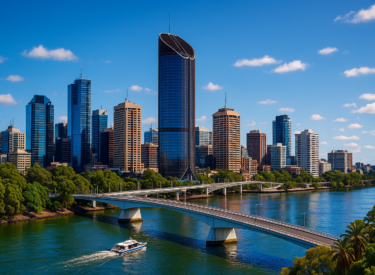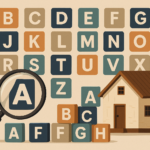“If it seems too good to be true, it probably is.”
That old saying has stood the test of time for good reason – and nowhere does it ring more true than in the world of real estate investing.
I’ve been in the arena of property for a number of decades, and if I could give new investors just one piece of advice, it would be this:
Don’t fall for cheap properties.
It’s a mistake I see time and again, particularly from investors early in their journey.
They chase affordability and what they hope are high yields, but what they often end up with is regret, lost time, and a damaged portfolio.
So let’s unpack why the “bargain” property is rarely a bargain at all.

The seduction of cheap
Let’s be honest – cheap properties look great on paper.
The entry costs are low, the rental yields look high, and it feels like a smart way to get your foot on the property ladder.
I know the feeling.
Early in my investment career, I was drawn to a cheap property offering a strong yield.
It was affordable, the numbers seemed to work, and I thought I was being clever.
But it wasn’t long before the hidden costs started showing up – repairs, tenant turnover, and worst of all, opportunity cost.
That "cheap" deal?
It ended up being one of the most expensive decisions I made, because it tied up capital that could’ve been working much harder elsewhere.
Why bargains often become burdens
There’s a reason these properties are cheap – and it’s not generosity.
1. Higher Maintenance Costs
Lower-quality properties tend to be older or poorly built, and they often require constant upkeep.
A few hundred dollars here and there may not seem like much, but on a lower-rent property, it eats your cash flow alive.
And these types of repairs tend to cost a high proportion of the property’s value when property values are cheap.
2. Tenant troubles
Cheaper properties tend to attract tenants with lower financial resilience.
This isn’t about being elitist – it’s a statistical reality.
You’re more likely to face late payments, vacancy, or property damage. And with tighter margins, every missed week of rent hits harder.
3. Sluggish capital growth
Here’s the big one – and the one most investors underestimate.
Cheap properties tend to grow in value more slowly.
They’re typically located in secondary areas with limited demand and poor fundamentals.
You might make a few bucks on rental income, but you miss the real wealth-building engine of property – capital growth.
I’ve seen investors fixate on a 2% higher yield only to completely miss out on 60% capital growth in a better-located property.
That’s not a yield play – that’s a wealth loss.
What smart investors buy instead
Rather than chasing bargains, seasoned investors seek quality assets in investment-grade locations.
These properties tend to cost more upfront, but they’re the ones that generate consistent returns, capital growth, and minimal headaches.
Here’s what I look for – and what we help our clients at Metropole find every day:
1. Location, location, location
You know this one, but let me stress it again.
Location does 80% of the heavy lifting in property performance.
We’re talking suburbs with gentrification potential, infrastructure investment, high walkability, proximity to jobs and schools, and emotional appeal.
The right suburb with strong demographic trends will often outperform even the most beautiful house in a poor location.
2. Scarcity and uniqueness
Think about it: what happens in a downturn?
Generic units and cookie-cutter houses get discounted first.
Unique properties – like those with great views, period charm, or irreplaceable land content – are in limited supply.
And scarcity drives value.
It’s what I call the “wow” factor. If a property has something rare or desirable, it will outperform in both rising and falling markets.
3. Premium rents in the local market
Target properties that command above-average rents for their category.
You’re not chasing the highest dollar per week – you’re seeking the upper-middle tier of your niche.
These properties attract more stable tenants, lower vacancy, and stronger rental increases over time.
When you buy the wrong property, it’s not just about the money you lose on maintenance or vacancy.
It’s about the opportunity cost of tying up your borrowing capacity and capital in an underperforming property.
You can’t go back in time and use that money on a blue-chip investment in a capital city.
You’re stuck, frustrated, and usually forced to sell and start over.
I’ve seen investors take 5–10 years to recover from a single bad purchase.
They could’ve skipped the pain by aiming higher from day one.
Final thoughts: cheap doesn’t equal value
There’s a massive difference between cheap and value.
You’ve heard it said before: “Price is what you pay, value is what you get.”
In other words, a cheap property is inexpensive, and usually for good reason.
A value property might cost more, but it has the fundamentals to grow, perform, and reward you over time.
So next time you see a property that looks like a “bargain,” ask yourself:
Is this going to be a stepping stone… or a stumbling block?
At Metropole, we help clients avoid the common traps and build resilient, high-growth portfolios.
If you’re serious about long-term wealth, don’t start at the bottom.
Start with a plan, a strategy, and the right asset from day one.














